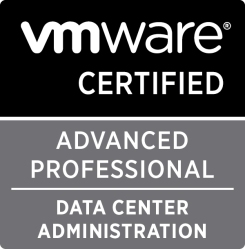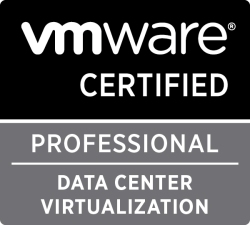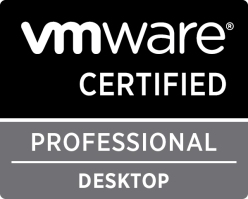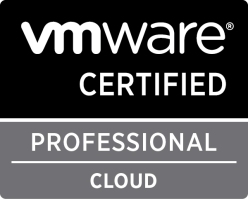VCAP-CID Study Notes: Objective 3.2
October 9, 2014 Leave a comment
This is Objective 3.2 in the VCAP-CID blueprint Guide 2.8. The rest of the sections/objectives can be found here.
Bold items that have higher importance and copied text is in italic.
Knowledge
- Identify the storage placement algorithm for vApp creation.
- As scary as this sounds this is documented very well in the vCAT Architecting a VMware vCloud document on pages 46-48.
- This is the link to the online version.
- Explain considerations related to vApp VM virtual disk placement.
- The same pages.
- Explain the impact of datastore threshold settings on shadow VM creation.
- If a vApp is a linked clone it check if the datastore holding the Shadow VM is reaching its yellow or red limit, if so then a new Shadows VM is created on a new Datastore.
- Explain the impact of multiple vCenter Servers on shadow VM creation.
- I explained how Fast Provisioning works in objective 2.5
- Explain the impact of VMFS and NFS on cluster size.
- In vSphere 5.1 (which this blueprint is based on) the maximum size of a Datastore is 64TB. NFS shares can be as large as the manufactures of the NAS box allows.
- Resource clusters can have 32 ESXi hosts. Each host can have 256 Volumes, but only 64 hosts can access the same volume.
- So at 64 ESXi hosts you are limited to showing them the same 256 Volumes.
- Each Datastore Cluster can only hold 32 Datastores, so that’s 8 full Datastore clusters.
- For NFS you can mount 256 mountpoints per host.
Skills and Abilities
- Given service level requirements, create a tiered vCloud storage design.
- Most likely the SLA’s around tiered storage ar based on performance guarantees.
- If the use cases and the requirements are that you need to have faster storage for some high IO VM’s and then slower storage for low IO VM’s a tiered storage would help in those instances.
- Most likely a 3 tier storage solution is used. Eg. Gold, Silver and Bronze.
- Gold would perhaps use 15K disks and SSD disks for caching, or 10K disks and SSD disk for automatic caching. RAID levels depend on the storage array manufacturer and write load.
- Silver could be a pool of 10K disks. RAID levels depend on the storage array manufacturer and write load.
- Bronze could be a pool of 7.2 NL-SAS disk and be used mainly for archiving purposes, idle workloads and perhaps test/dev (just remember that test/dev environments are production environments for developers :))
- Given the I/O demands of various cloud workloads, determine an appropriate vCloud storage configuration.
- This is also based on storage tiers, or how they are configured.
- RAID levels, in legacy storage arrays, play a role in calculating IO performance for disk arrays.
- R1 or R10: Mirror og Mirrored Spanned drives. Write penalty is 2, so for each write issued from the servers, two need to be performed on the array. That’s because it’s a mirror.
- R5: Uses Parity to allow failure of one drive. Write penalty is 4. That’s because with each change in the on the disk, a read on both data and parity is performed, and then write the data and the parity.
- R6: Uses two sets of parity. Write Penalty is 6. Three reads, three writes.
- RAID-DP: Two sets of parity like raid 6. But the write penalty is only two because of how WAFL writes data to disks.
- How to calculateIOPS
- First thing first, a list ofIOPS per disk speed
- 15K Disks = 175-210 IOPS
- 10K Disks = 125-150 IOPS
- 7.2K Disks = 75-100 IOPS
- 5.4K Disks = 50 IOPS
- Also it depends if it’s a SATA or SAS drive, and if it’s an enterprise grade disk or not (higher MTBF).
- And then Duncan Epping will explain IOPS calculations for us in this post: http://www.yellow-bricks.com/2009/12/23/iops/
- First thing first, a list ofIOPS per disk speed
- Given service level, workload and performance requirements, create a private vCloud storage design.
- Private Cloud most likely have workloads that are known, or even planned in advance. So there is more information about the storage requirements for the workloads.
- This information can be used with other information (gathered in a Current State Analysis) to create a storage design that would fulfill all requirements.
- Data that would be nice to have for a private cloud are:
- IO profile of the workload
- Can be used to calculate IO requirements for the environment.
- Hard disk size and number, and growth
- To calculate initial capacity and projected growth
- RTO if a LUN is lost
- How long it will take to restore all the VM’s on the datastore, and that depends on the backup solution used
- IO profile of the workload
- As an example you can then create storage tiers that have different sizes to differentiate on RTO, but the same RAID setup.
- Given service level, workload and performance requirements, create a public vCloud storage design.
- Public Clouds have very varied workloads, and there is no way of knowing beforehand what the medium size workload is in these environments.
- When using Fast-provisioning and Thin-provisioning larger Datastores are better
- 2-4 TB Datastores are a good choice and use SDRS to balance workloads inside a Storage Cluster. Those Clusters can grow to 64-128 TB using this configuration.
- Michael Webster explains this in detail in this blog post: http://longwhiteclouds.com/2013/02/18/considerations-for-designing-a-small-vcloud-director-environment-storage/














